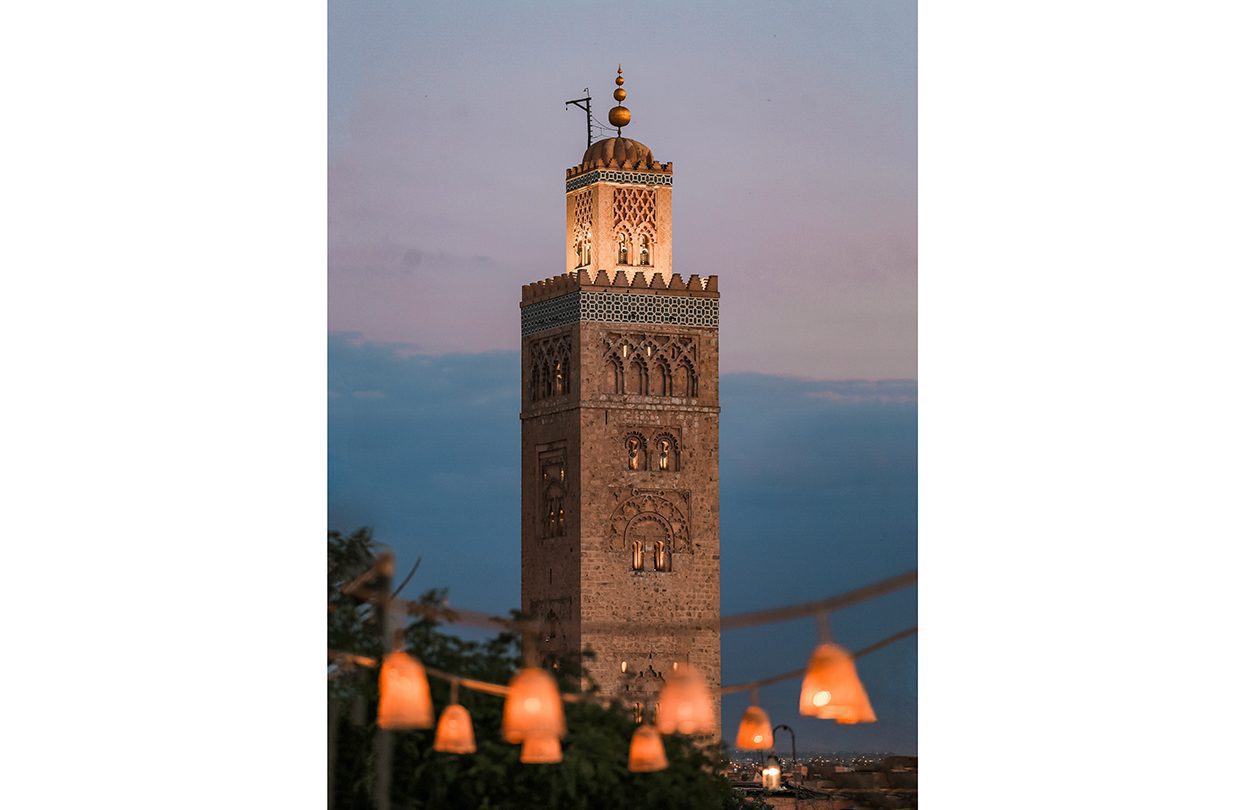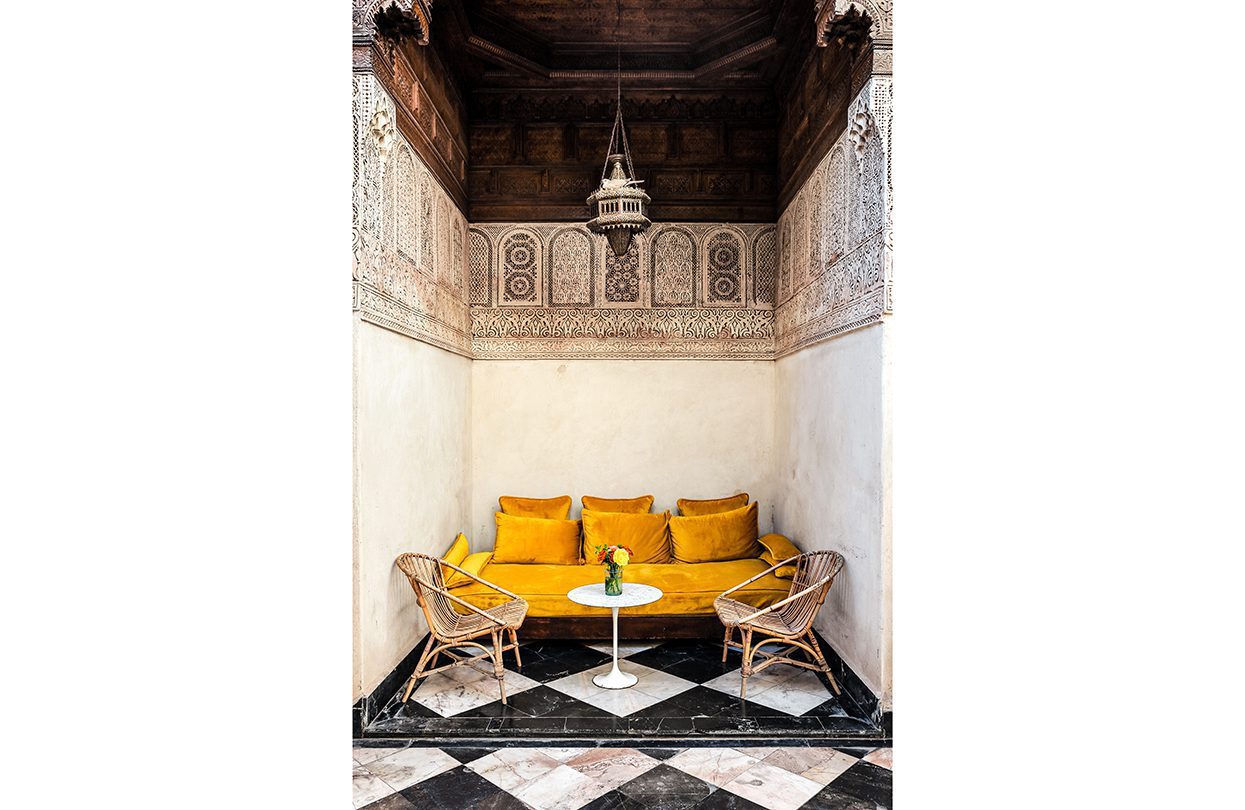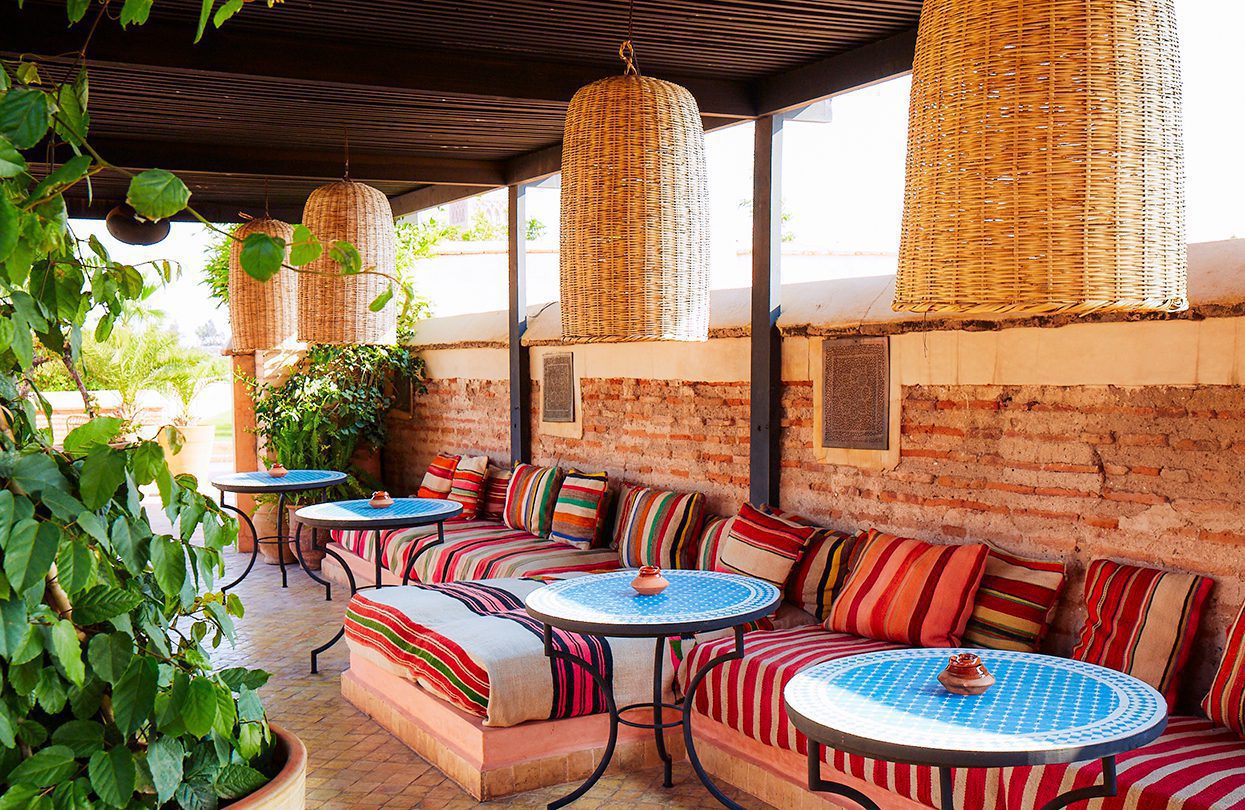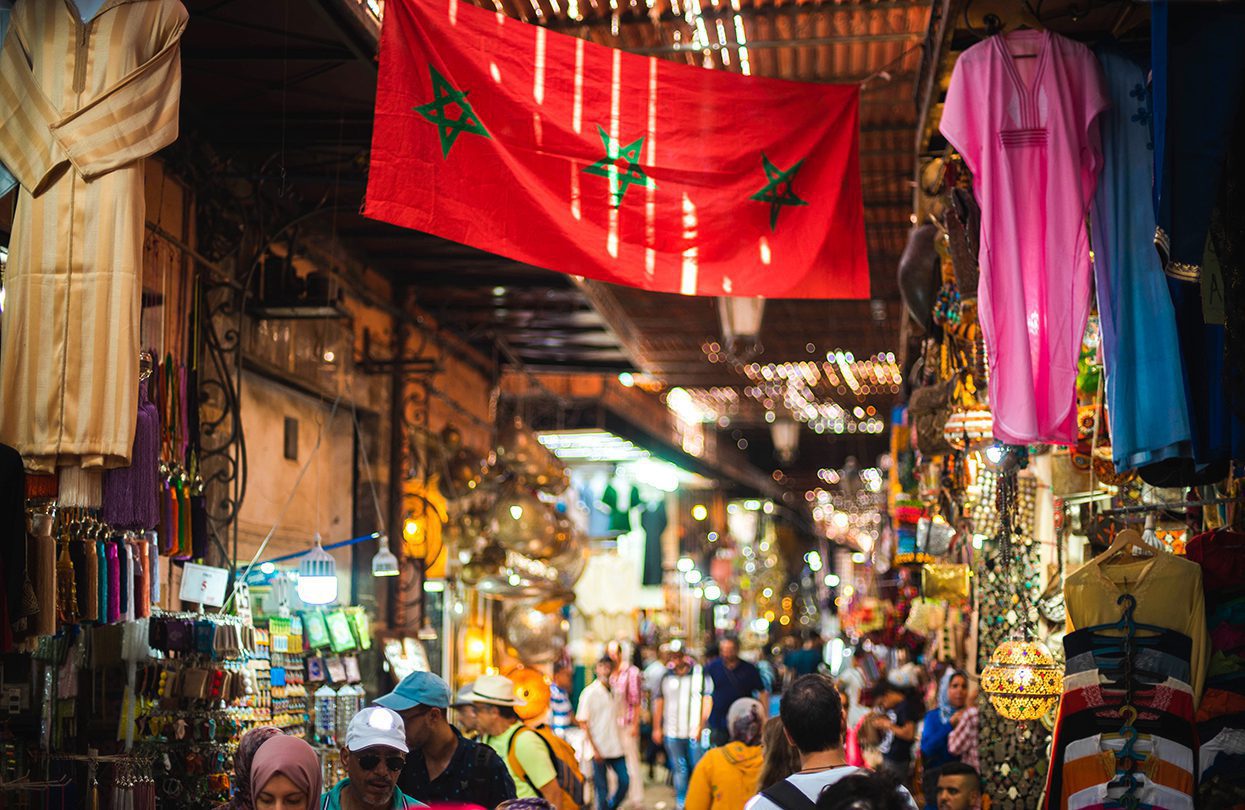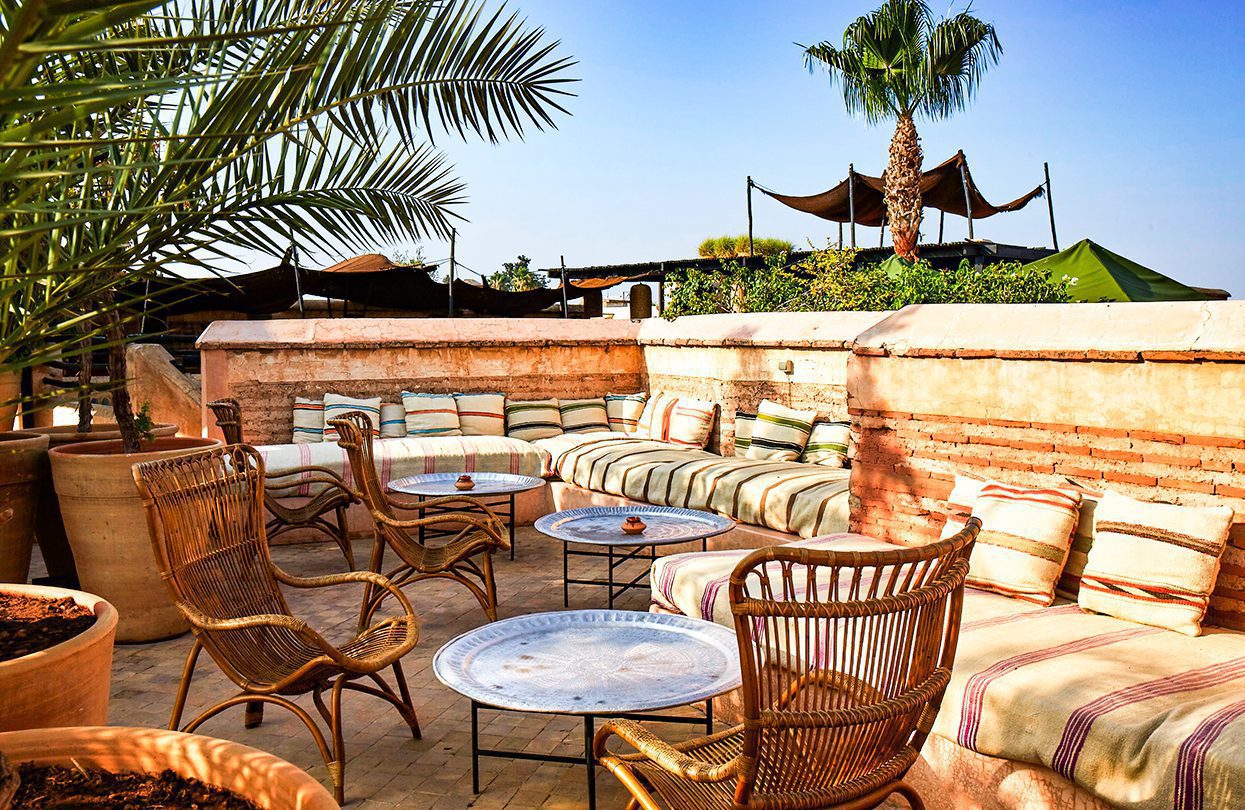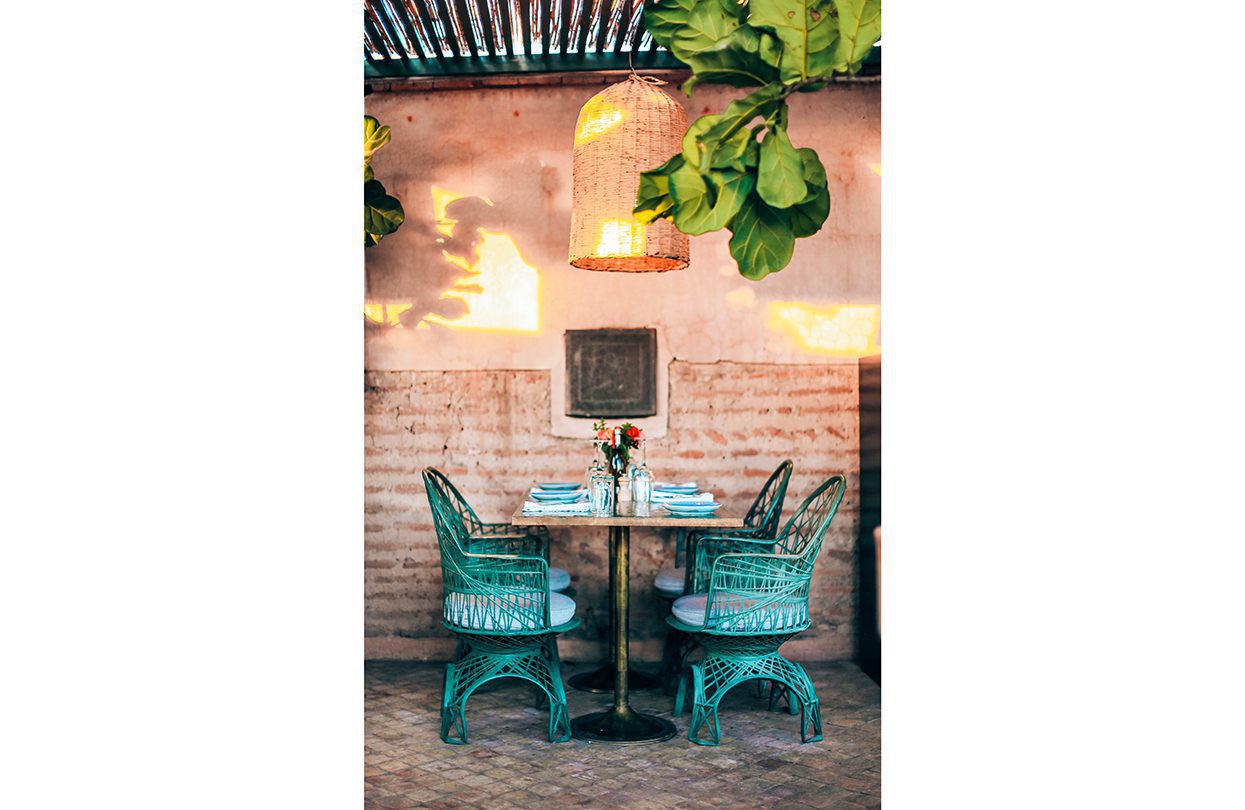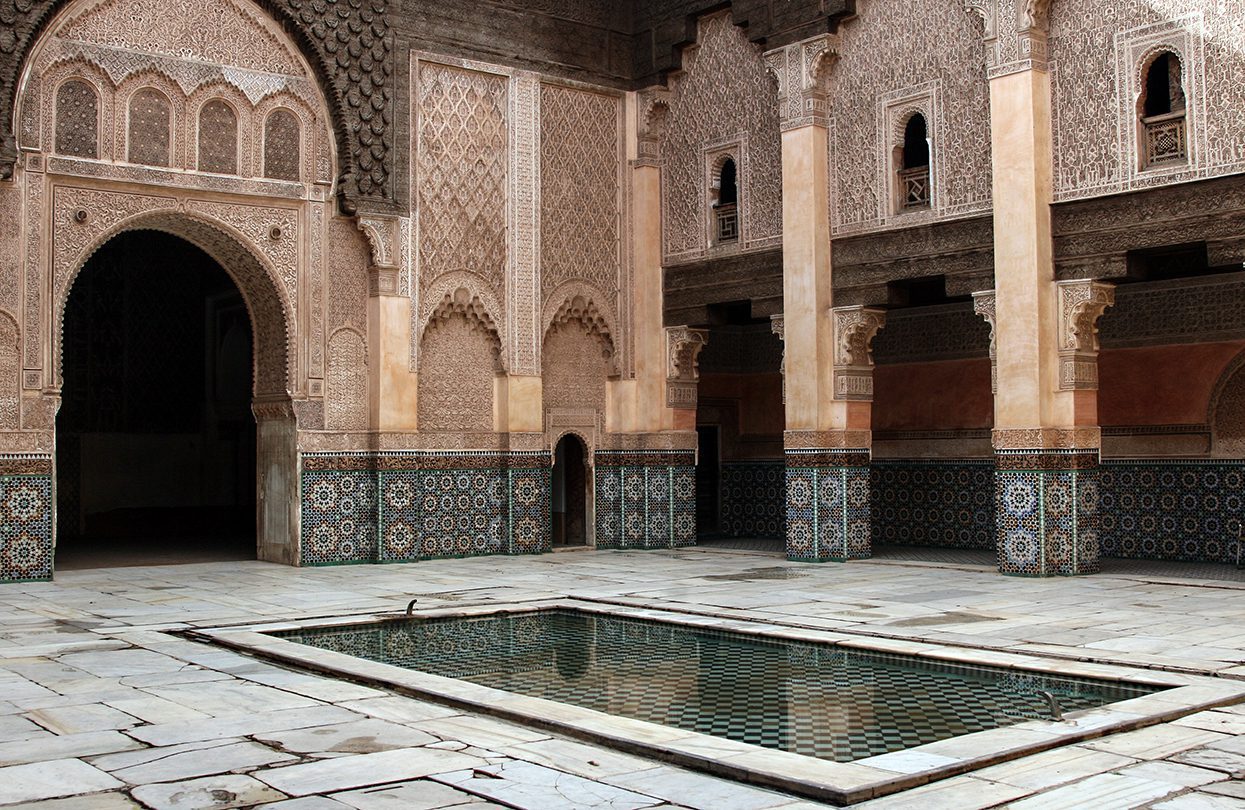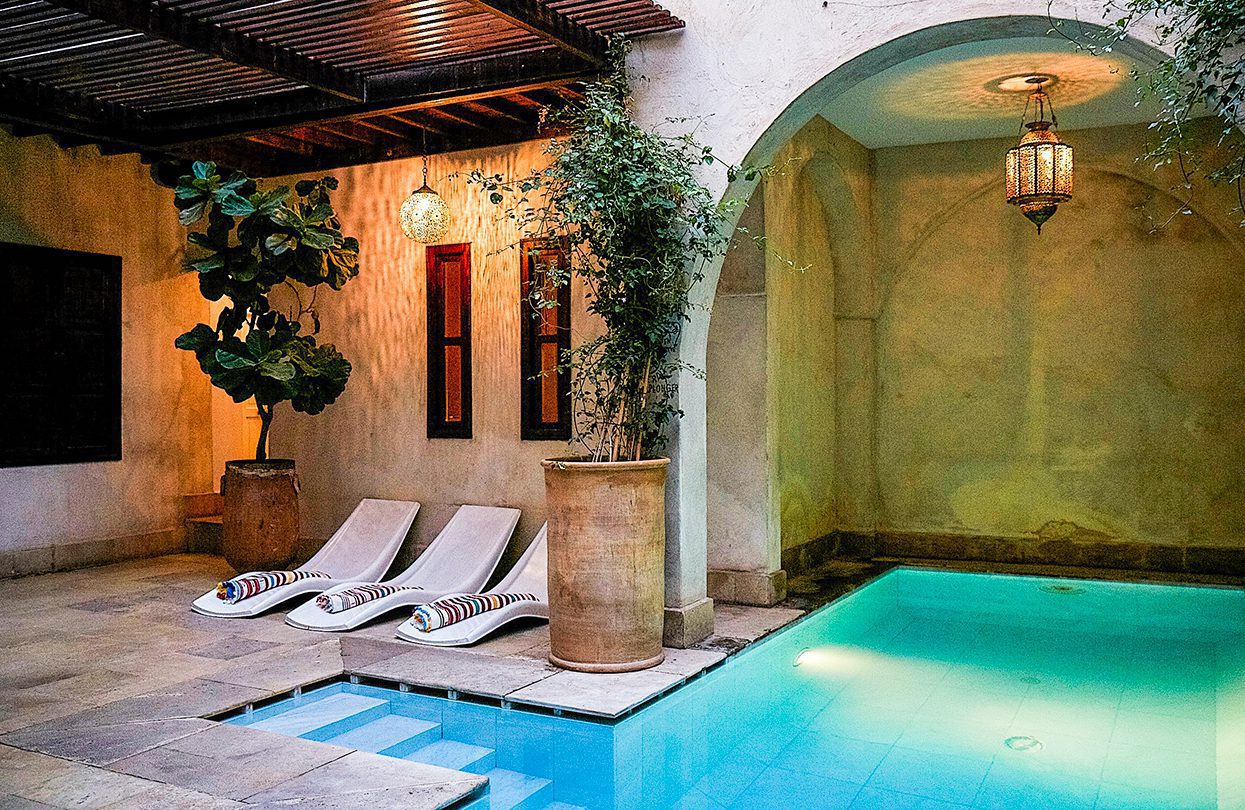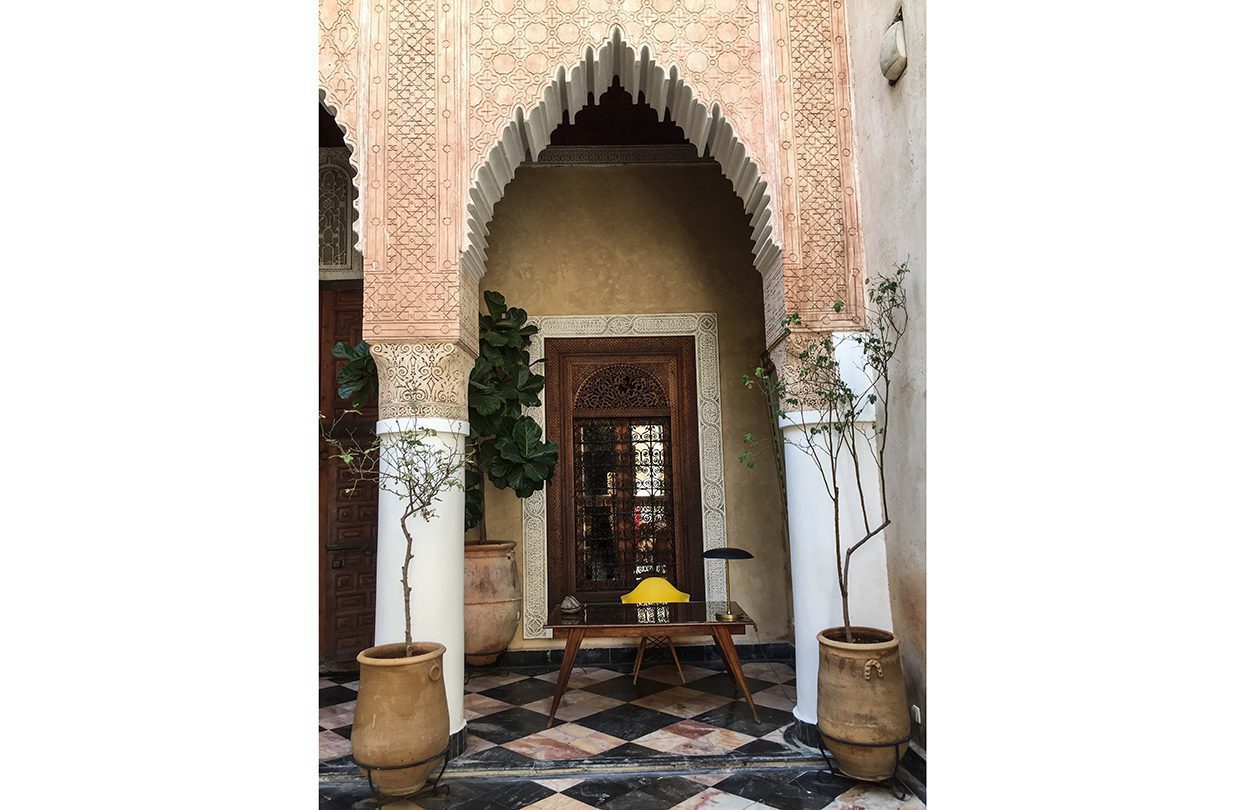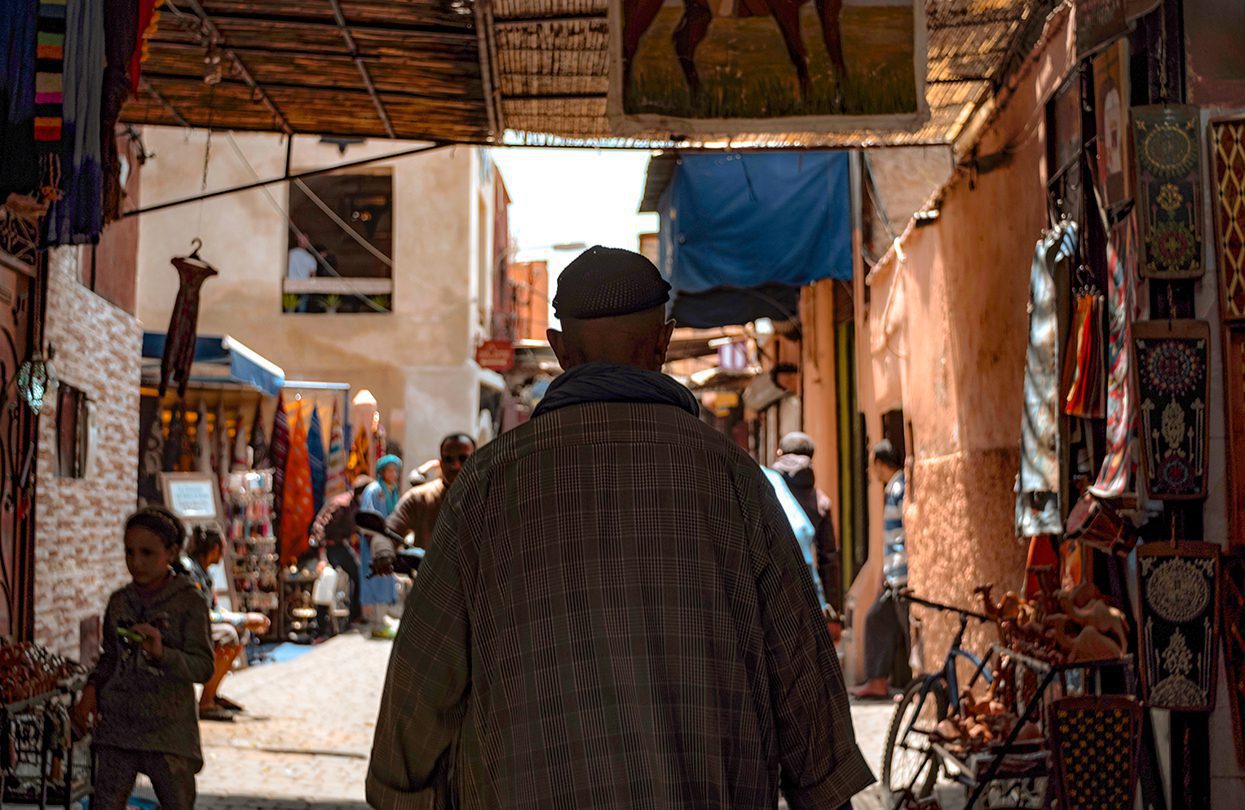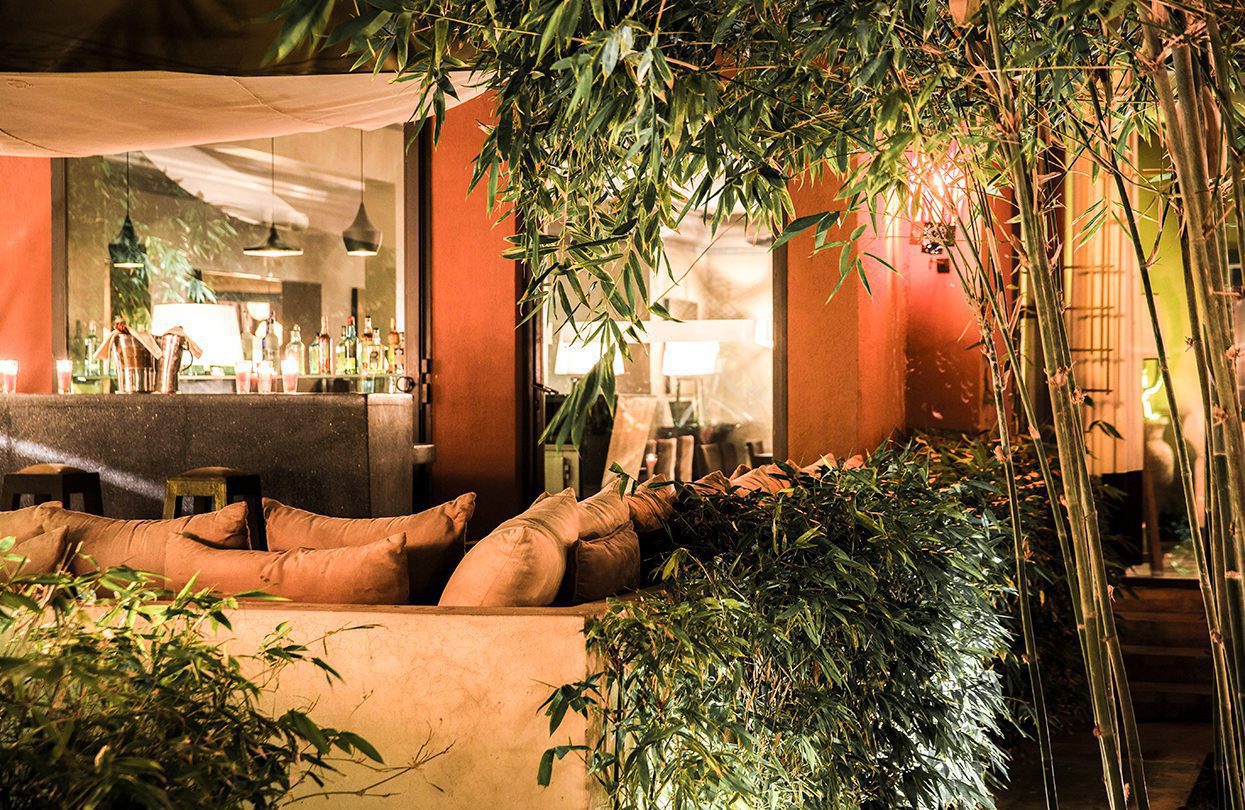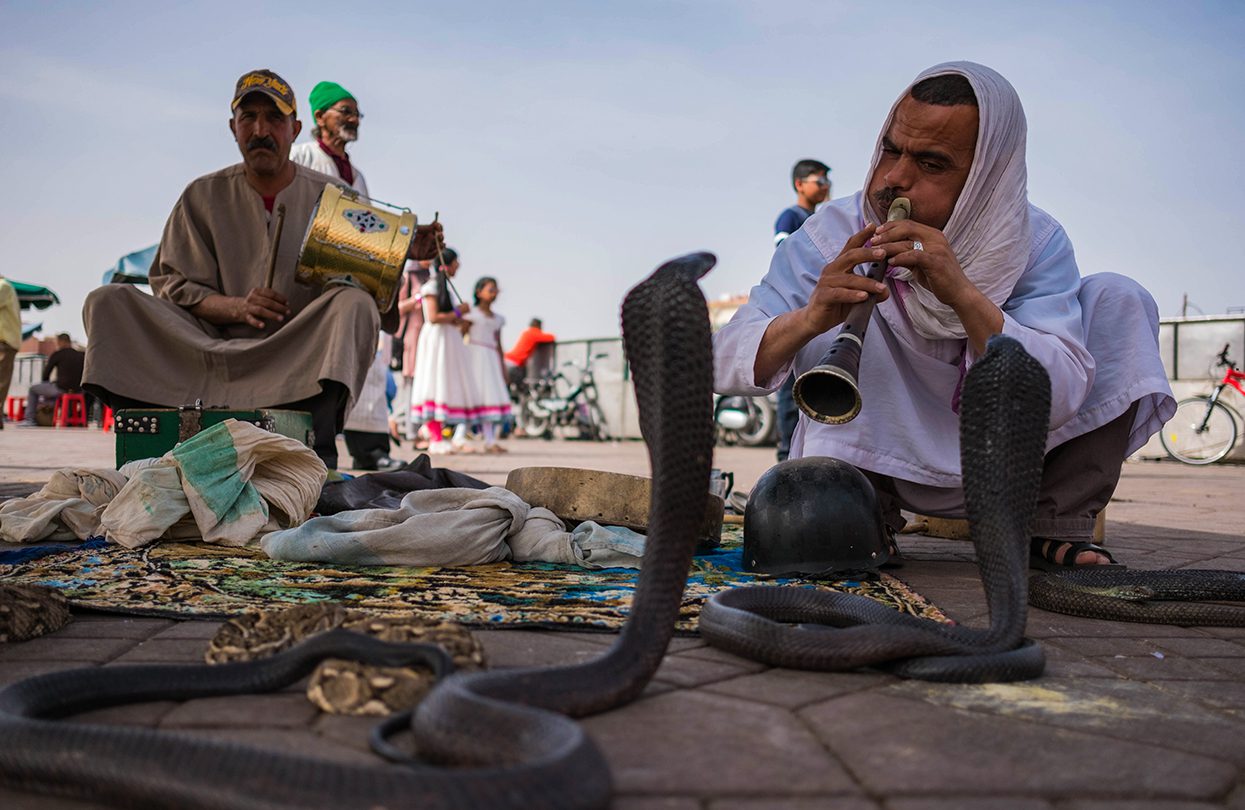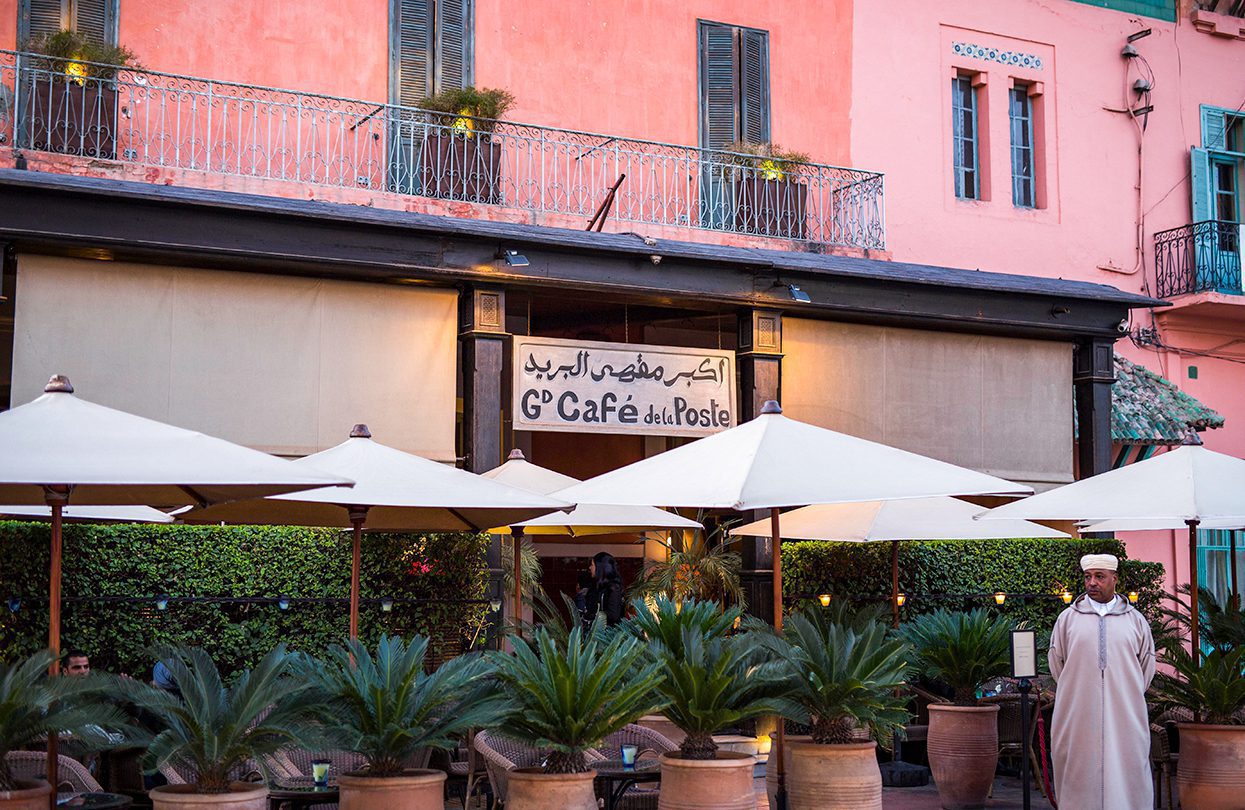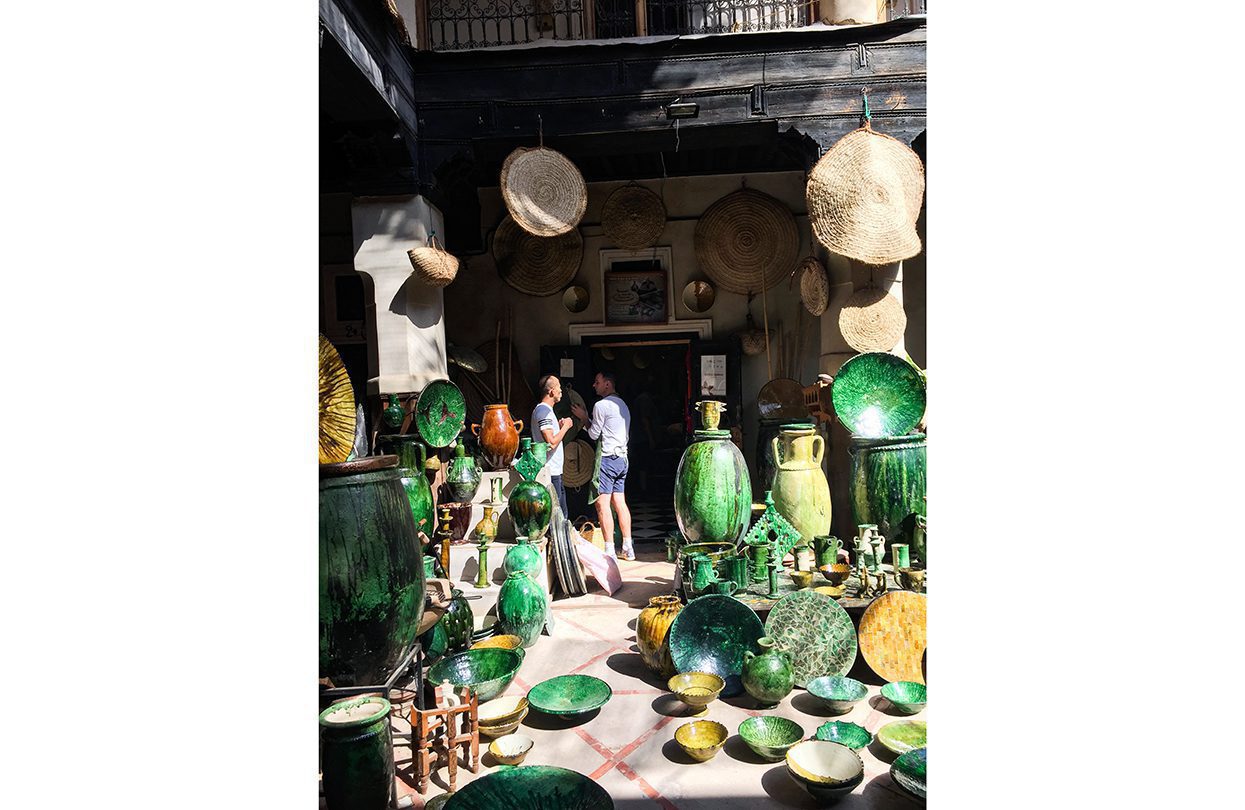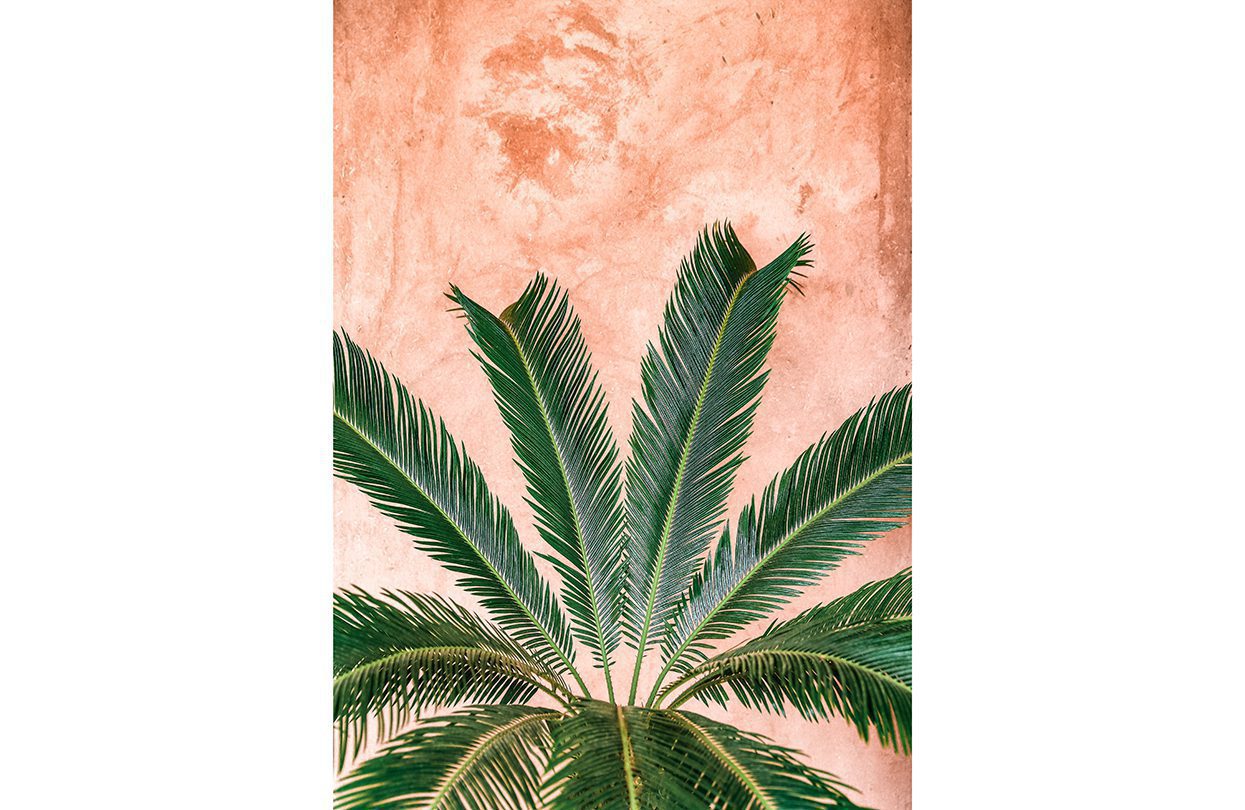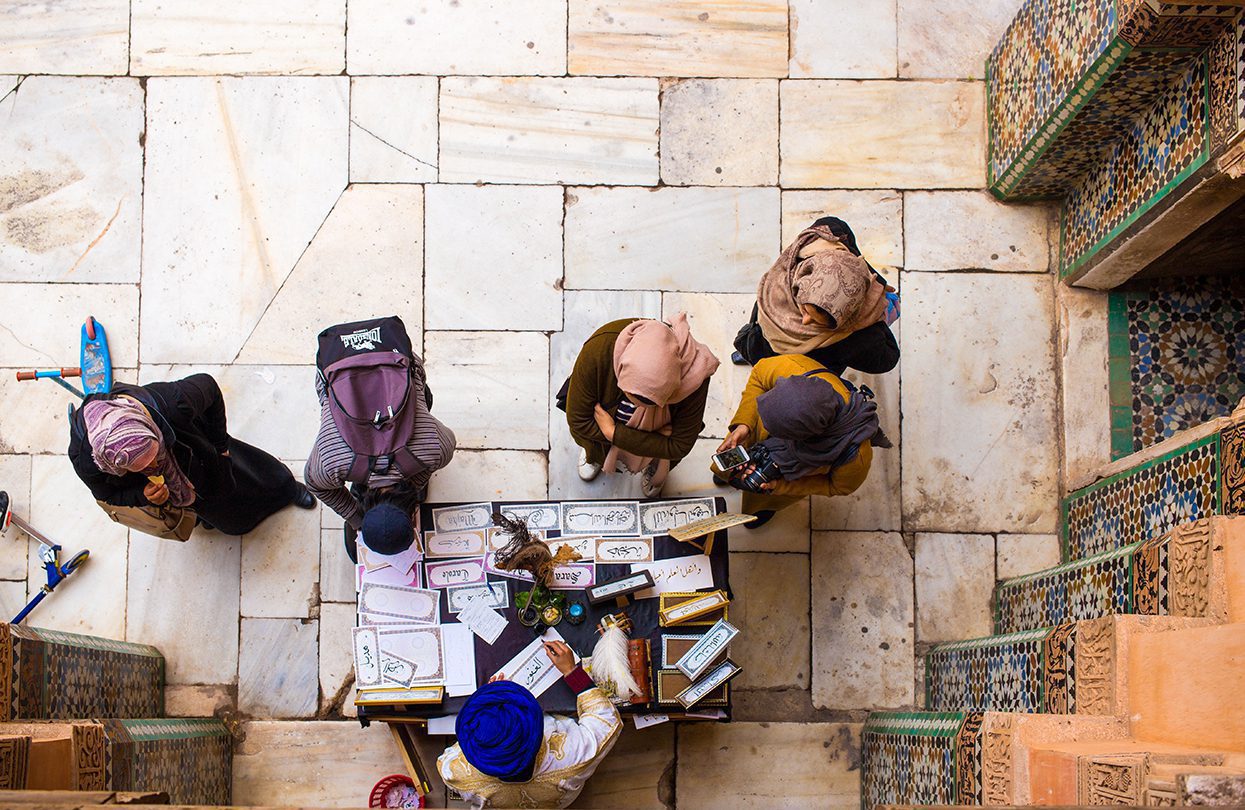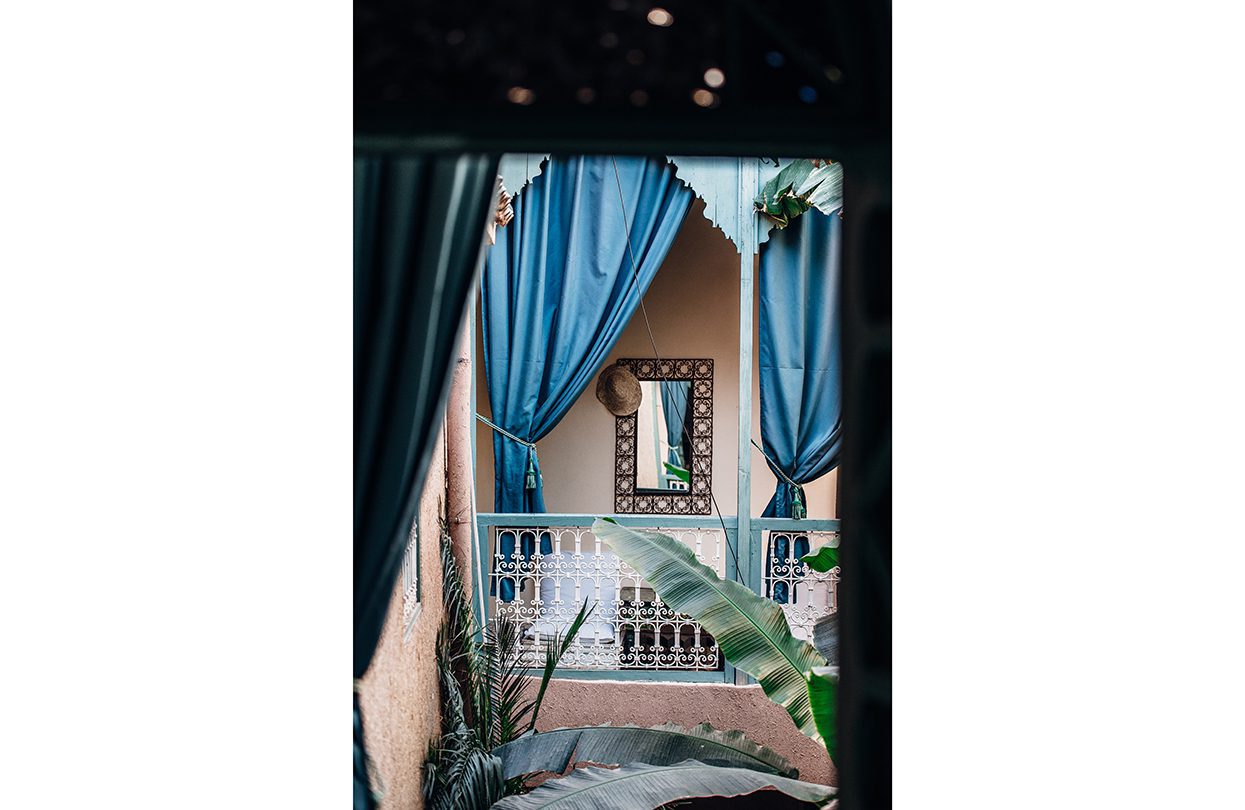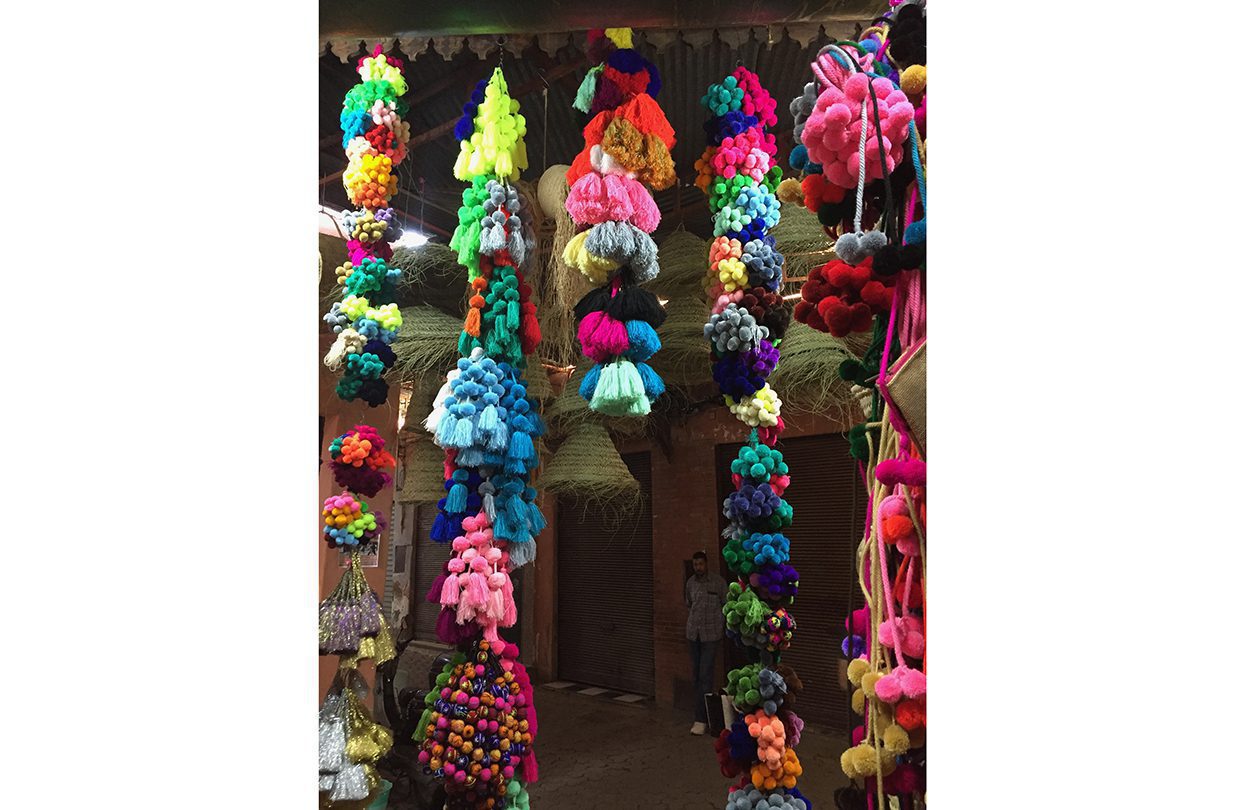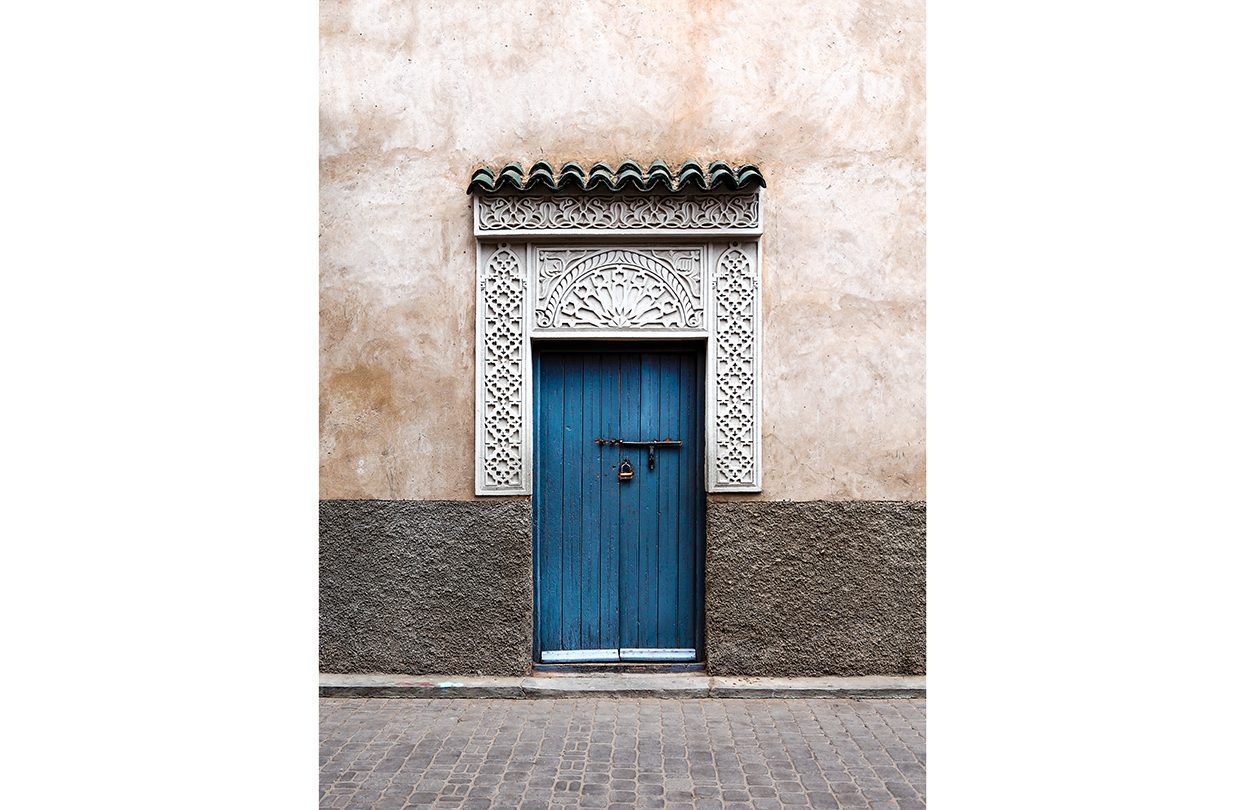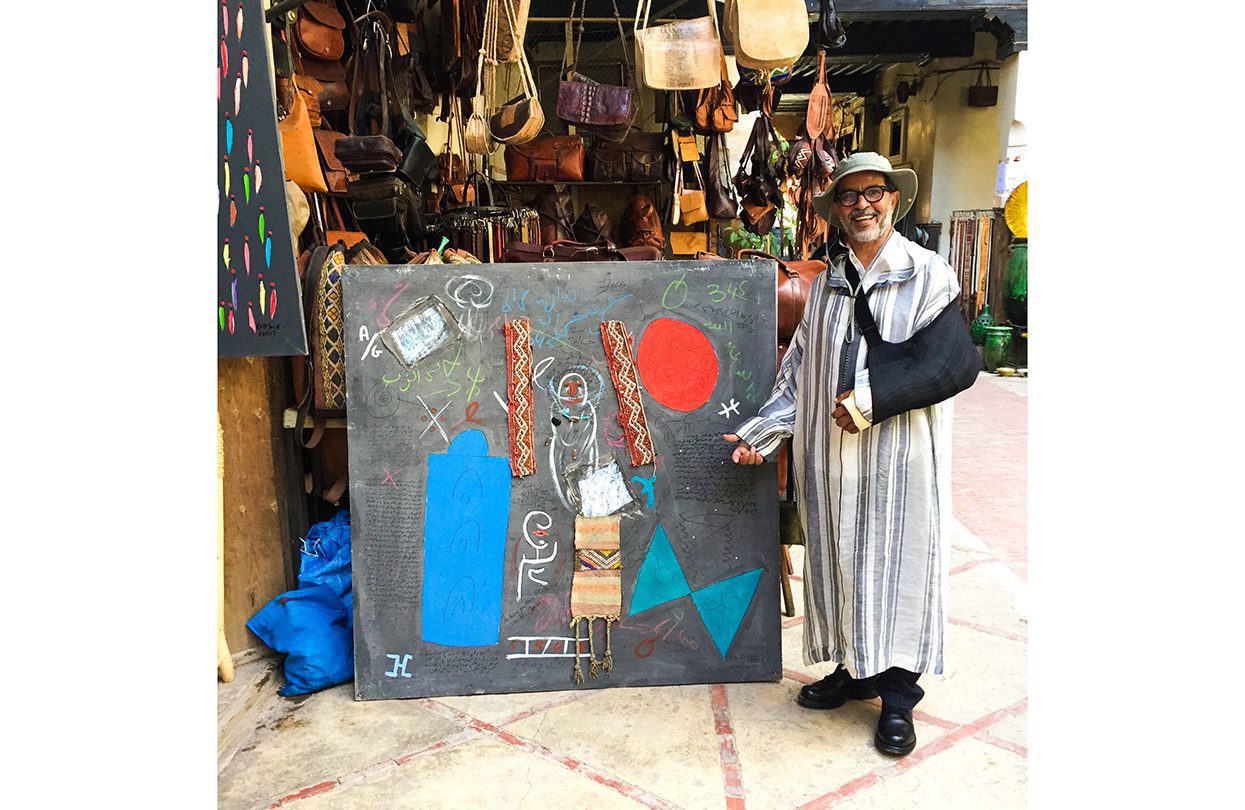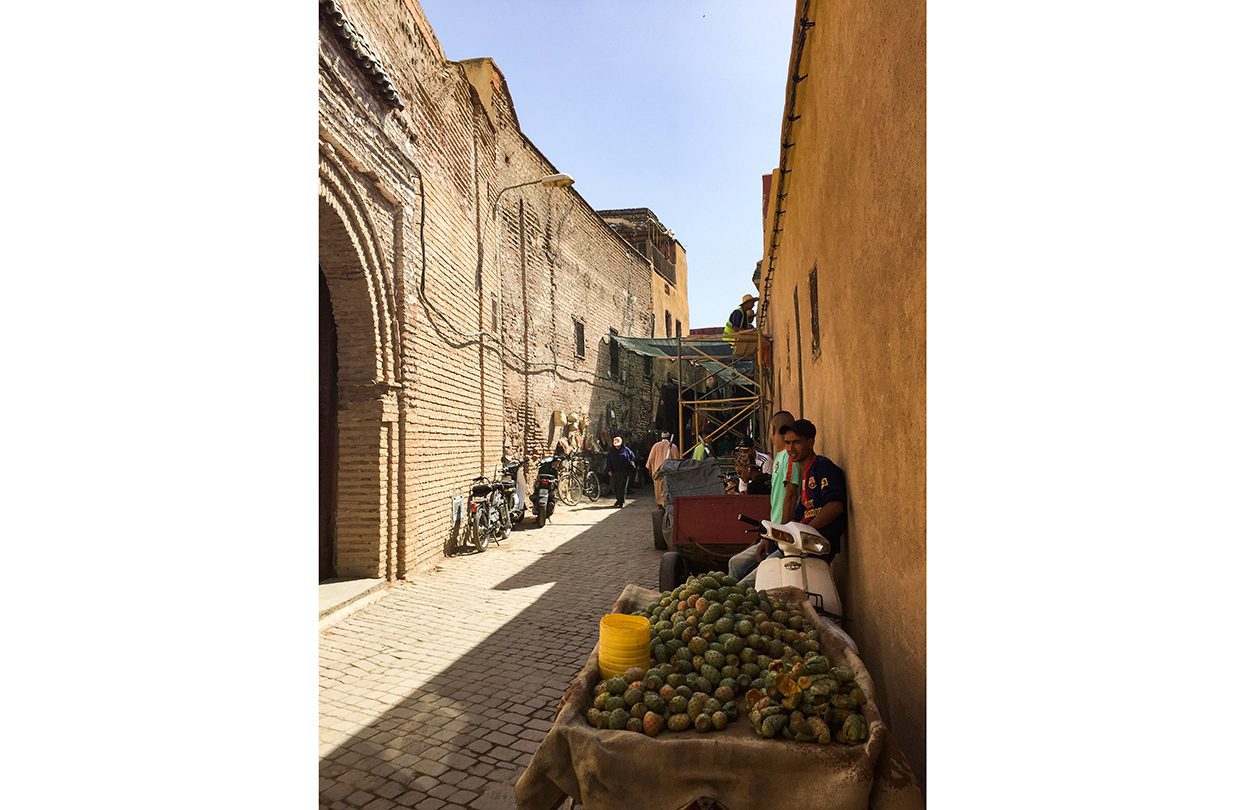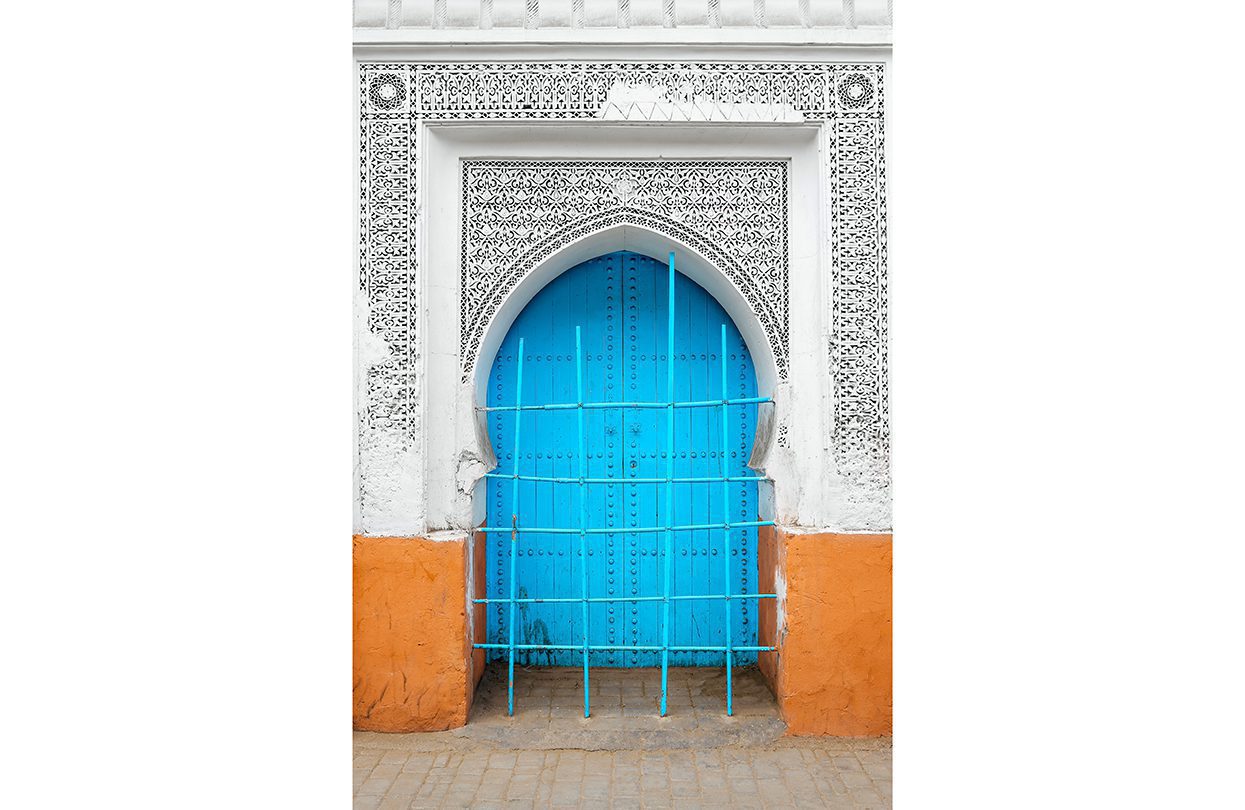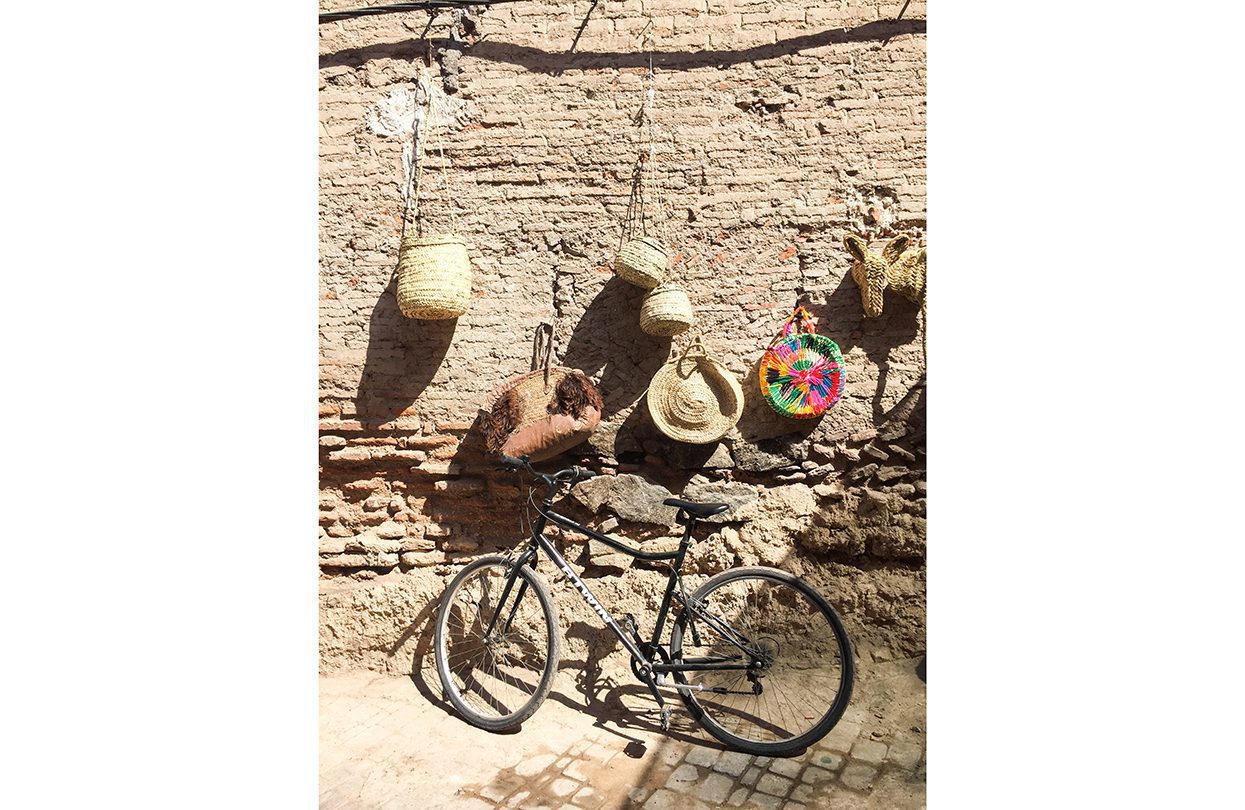Art, adventure and romance: the exotic allure of North Africa’s fabled Red City makes it the ultimate lovers’ bolthole.
On a night much blacker than this, a night before electricity had pierced the recesses of the souk, and ten years before Talitha Getty and Yves Saint Laurent made Marrakech their playground, Mustapha Chouqoir was born in the medina.
Now silver-haired and bespectacled, dressed in a stone-coloured djellaba, Mustapha is as much a part of the snaking red alleyways as the donkeys and the spice sellers themselves. Today, for one day only, he is my guide.
Little has changed, he tells me, in his beloved souk. With the exception of electricity and the motor scooter – “too many Chinese horses,” he laments – the medina has lost none of its soul. It is a seething, visceral playground, the home of paupers and princes, craftsmen, and pickpockets, where all manner of earthly delights play out behind heavy studded doors.
The donkeys are still here, dragging carts laden with rubble, laden with oranges. My husband and I buy fresh pomegranate juice from a weather-beaten street-seller and interlock our fingers as we slide further into the recesses of the souk. I’m thirsty for the ‘real’ Marrakech, intrigued by the city’s artistic heritage, and I want to find the craftsmen who’ve plied their trade here for centuries. With Mustapha at my side, I feel them drawing closer.
At a juncture in the souk’s backstreets, we lose the tourist hordes and plunge deep into an age-old covered market. This is the blacksmith’s quartier, where deeply lined men in leather aprons are welding and hammering blackened metal into trays, mirror frames, and intricately decorated Moorish lanterns. They glance up as we pass by, sparks of molten iron falling unnoticed upon their leathery hands. The noise and heat are intense, clattering, and we are quietly relieved to slip out of the darkened workshops into the colourful beauty of ‘slipper street’.
Pretty raffia mules, backless and gently frayed, hang like sweeties from the myriad storefronts. In dusky pink, teal and a vivid chartreuse that steals my heart, they are woven in their thousands by old women hunched over baskets of straw. At Mustapha’s behest, we visit Aziz, where a wizened Marrakchi cobbler carves the softest white leather into sandals that fit me just so. They are effortless, contemporary, and cost me less than a glass of wine.
Lining the outer walls of the souk are the caravanserai, or founduk in Arabic, hacienda-style hotels surrounding an open courtyard. In years gone by, these boarding houses were the digs of the Arab world’s fabled traders, itinerant nomads who passed through Marrakech to trade silk, spices and incense.
Now, they are home to the city’s craftsmen, the tiny rooms transformed into rudimentary artists’ studios, leather tanneries and pottery workshops. In one such sunlit courtyard we meet Ali, a traditional ceramicist from Tamegroute, a small village in Southern Morocco’s Draa River valley. Ali’s family dig clay from the hard earth, leaving the plates to bake in the desert heat. A natural treatment of silicon, manganese and copper gives the finished pieces their famous green glaze.
As Ali wraps my sea-green treasures in old newspaper, my husband and I retreat to the cool, whitewashed, interior of the Maison dé la Photographie. This little-known institution houses a permanent collection of over 8000 photographs of Morocco in the years between 1870 and 1950, along with some of the earliest known footage of rural Berber life. We are entranced, struck by haunting images of bejewelled Berber women and colonial-era street scenes. On the palm-clad roof terrace, mint tea in hand, we steal kisses beneath a fading desert sky.
Mustapha leaves us as the sun begins to set over Djemaa el-Fna. I watch him disappear into the crowds, his earth-toned djellaba gradually fading into thousand others just like it. This cacophonous public square is the beating heart of the Eternal City and one of North Africa’s most important commercial hubs since the 11th century.
Tonight, it has lost none of its sultry, steamy magnetism, and the air is thick with smoke and incense. Snake-charmers and storytellers, magicians and monkeys – we lose ourselves in the chaos, trailed by the hypnotic Saharan sound of Gnawa musicians. At Chez Mustafa, a buzzing street-food stall, we snack on white-hot squid rings and silken aubergine as a Berber woman paints henna patterns on the arms of a pretty young girl.
We leave the square and wend our way toward Hammam de la Rose, seeking peace for our overwhelmed senses. Side by side we lie as we are pummelled and stretched, scrubbed and rinsed, as rose petals, salt, and oily black soap are pressed deep into our skin. On the hot marble bench, heated by a raging furnace below, we are coated in minerally Ghasoul clay then doused with first steaming water then cold. Revived, we slip back to El Fenn, to the cool stone floors and zellige-tiled corners of the exceptional riad that we have come to call home.
Later, as we sip Negronis on the hotel’s lantern-strewn rooftop, we gaze out beyond the red-brick mosque. Night falls heavily in Morocco, and a velvety cloak has already claimed the city. The scent of Frankincense wafts around us, a fragrance as ancient as the dusty streets and more still. As ancient as the call of the Muezzin, whose haunting cry peals out across the blackened sky.
Before bed we swim silent lengths in the limpid spa pool, ice cold water lapping at cool stone walls. All is silent within our fortress, and we are lost in a world of our own. But beyond the walls of El Fenn, Marrakech seethes in the blackness.
STAY
El Fenn
This sprawling, 28-room riad is the passion project of art-loving Vanessa Branson, sister of globetrotting Richard and founder of the Marrakech Bienniale. Expect ornate Arabic tilework, cooling lap pools and palm-shaded courtyards. Rooms are art-filled, tech-free, and very stylish, although some may find them dark. Triple-tiered suite number six has a private plunge pool, if you can tear yourself away from the hotel’s exquisite rooftop dining terrace and bar. Breakfast, with homemade granola, pastries, and an outstanding shakshuka (baked eggs), is included. El-fenn.com, doubles from £335
Le Selman
Opulence is the buzzword at Le Selman, a sleek, gilt-edged confection in the desert, just ten minutes out of the city. Plush velvet booths, endless marbled corridors, and a sinfully sultry bar are the last word in luxury, along with a show-stopping 80-metre cabana-lined swimming pool. Rooms are spacious and supremely comfortable, with flat-screen televisions, king-size beds, and pretty outdoor terraces. An on-site Arab horse stud, one of Morocco’s finest, offers private tours and twice-weekly shows. Selman-marrakech.com, doubles from £240
Eat
Grande Café de la Poste
All black and white tiles, Malawi cane chairs and trailing banana leaves, Morocco’s finest café is steeped in colonial history. Dine by day with Marrakech’s chicest in the palm-shaded pergola, an oasis of cool in the searing city heat. The carpaccio de boeuf is the best you’ll find this side of Paris and there’s an excellent wine list to match. Pick up a copy of Le Monde, order a glass of Sancerre and make like the demi-monde. Inside, you’ll find twenties-era splendour with raffia lampshades, smart striped cottons, and exotic Eastern accents. The classic brasserie is the place for supper, or else kick back in the salon with a paramour and let the romance of a bygone era wash over you. An absolute classic. Grand Cafe de la Poste
Bô&Zin
If Marrakech had a St Tropez, Bô&Zin would be there. Unashamedly glam, it’s the go-to for the city’s glitterati, with heavy velvet curtains separating the one-time villa from the outside world. Inside, the candlelit nightspot is ultra-luxe, with Tom Dixon lamps, tented gardens, and an Ibiza-esque dinner-to-club vibe. Book a table for two overlooking the dance floor and order the Vietnamese nems, part of a superb Asian fusion menu, along with one of the club’s signature cocktails. After supper, hit the dance floor with a dressed-up international crowd or kick back by the twinkling outdoor pool – either way, it’s going to be a late night. Bo-zin.com
La Cuisine de Mona
This tiny backstreet spot in Guézin is totally under the radar, but a go-to for those seeking for the finest Lebanese food. Take a tip from the bustling chef-patron Mona and order the mixed mezze platter Ð the chicken wings and baba ganoush are legendary. There’s also delightful crudité to start and a decent wine list, unusual for a spot this small. Book ahead for one of two tables on the twinkly outdoor terrace. Lacuisinedemona.eresto.net
Art
Musee Yves Saint Laurent Marrakech
The new jewel in Marrakech’s crown, the angular, honeycombed, KO-designed building is an architectural delight in itself. Lose yourself in the archives of Marrakech’s adopted son and discover how his famous pantsuits and safari jackets redefined the modern woman’s wardrobe. There’s a library containing over 5000 fashion books, along with a superbly chic little café, the ideal spot for a sun-soaked café noir. Museeyslmarrakech.com/en
Gallery David Bloch
An airy, light-filled gallery in Marrakech’s new town, showcasing young modern artists in an appropriately contemporary setting. Moroccan street artists are well represented, along with established international painters and sculptors. Davidblochgallery.com
Galerie 127
The first gallery in Africa to focus solely on contemporary photography, 127 is the passion project of founder Nathalie Locatelli whose discerning eye has collated work from all over the Maghreb. Expect large-scale, mainly black and white, images in an industrial-style space with pared-back, exposed-brick walls. Galerie127.com
Maison de la Photographie
Extensive archival images displayed in an airy riad-turned-gallery in the heart of the souk. The pretty rooftop café has fine views to the snow-capped Atlas and a small shop sells a huge selection of black and white collectors’-quality prints. maisondelaphotographie.ma
Shopping
LRNCE
Belgian-born Laurence Leenaert is the city’s rising interiors star, designing rugs, fringed sandal, and the coolest of ceramics with Picasso-esque hand-painted flourishes. Her studio, in the city’s hip industrial district, is packed with blankets, paintings, and hand-thrown vases, all in her signature rustic-meets-moderne style. One to watch. Lrnce.com
Le Magasin Général
A one-stop shop for vintage, colonial-era furniture and accessories. Marrakech’s most stylish come here to browse bamboo cane beds, antique medicine chests, and monogrammed packing cases, along with amber paperweights and taxidermy. It’s all beautifully edited and staffed by a charming Belgian couple who also run an interior design business. Magasin-general-marrakech.com
Marrakshi Life
For a contemporary spin on traditional Moroccan clothing, go no further than the atelier founded by New York fashion photographer, Randall Bachner. A crack team of Marrakshi weavers handloom all the fabrics, before creating louche, laidback separates and softly tailored unisex jumpsuits that are supremely easy to wear. Expect to see plenty of neutral pinstripes, gently tapered trousers and flowing coats, along with a hip take on sportswear. A new outlet, in equally chilled-out Uruguay, has just opened. Marrakshilife.com
Potier de Tamegroute Chez Abdelkarim Boudlal
The loveliest, greenest Tamegroute ceramics, made by the family of charming owner Ali. Expect two showrooms heaped high with bowls, platters, candlesticks, and curios, along with contemporary-looking half-glazed plates. There are also plenty of the harder-to-find chartreuse-coloured pieces. 192 FondoqSarsar, rue de Moissine. No web. GUIDE Mustapha Chouqoir +212 662 104099.
Photographs by Maya Boyd & Christopher Phelps
Fly Turkish Airlines from Istanbul to Marrakech starting from 29th March 2019. ◼
Subscribe to the latest edition now by clicking here.
© This article was first published in Dec-Jan 2019 edition of World Travel Magazine.


